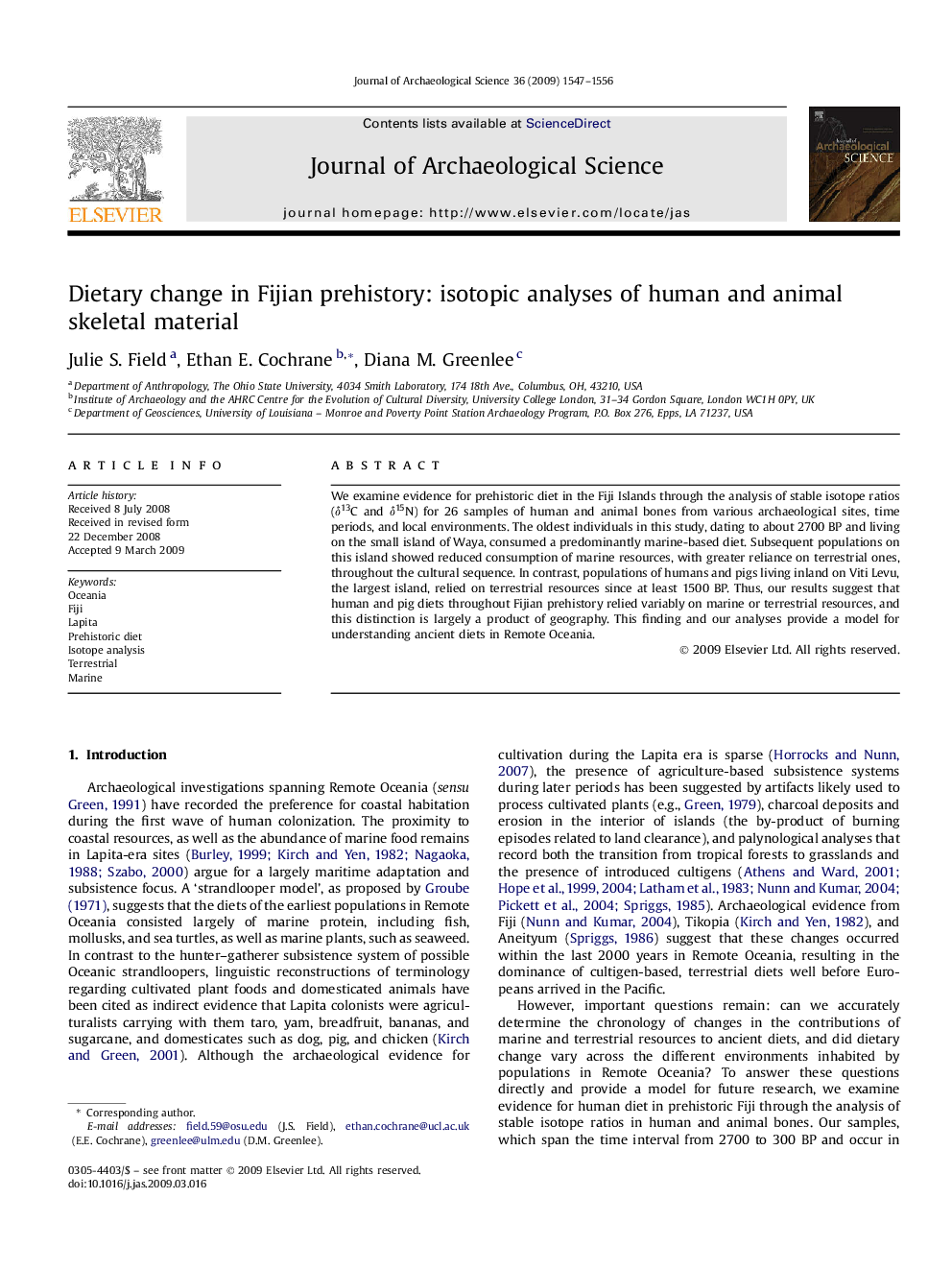| Article ID | Journal | Published Year | Pages | File Type |
|---|---|---|---|---|
| 1037032 | Journal of Archaeological Science | 2009 | 10 Pages |
Abstract
We examine evidence for prehistoric diet in the Fiji Islands through the analysis of stable isotope ratios (δ13C and δ15N) for 26 samples of human and animal bones from various archaeological sites, time periods, and local environments. The oldest individuals in this study, dating to about 2700 BP and living on the small island of Waya, consumed a predominantly marine-based diet. Subsequent populations on this island showed reduced consumption of marine resources, with greater reliance on terrestrial ones, throughout the cultural sequence. In contrast, populations of humans and pigs living inland on Viti Levu, the largest island, relied on terrestrial resources since at least 1500 BP. Thus, our results suggest that human and pig diets throughout Fijian prehistory relied variably on marine or terrestrial resources, and this distinction is largely a product of geography. This finding and our analyses provide a model for understanding ancient diets in Remote Oceania.
Related Topics
Physical Sciences and Engineering
Materials Science
Materials Science (General)
Authors
Julie S. Field, Ethan E. Cochrane, Diana M. Greenlee,
